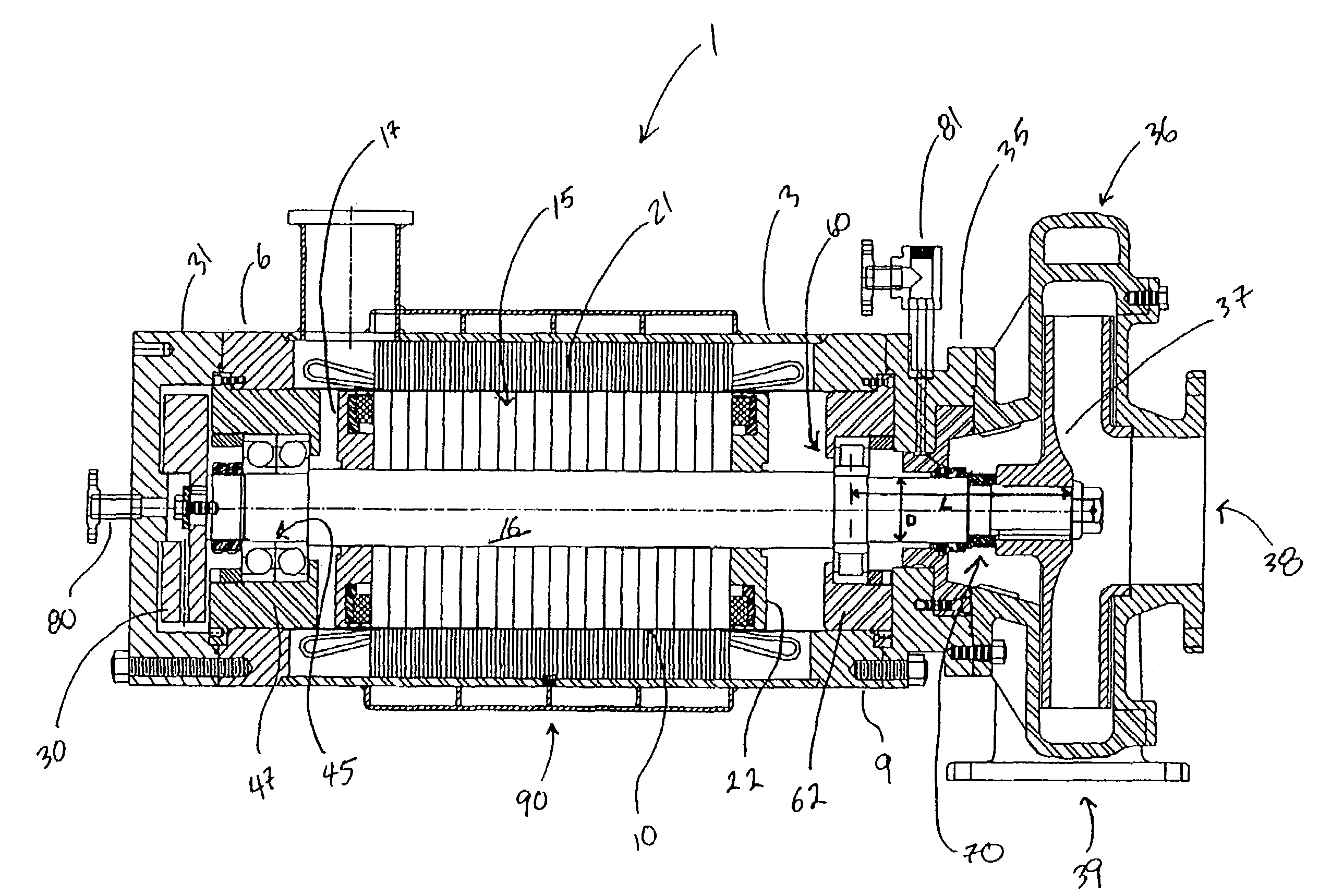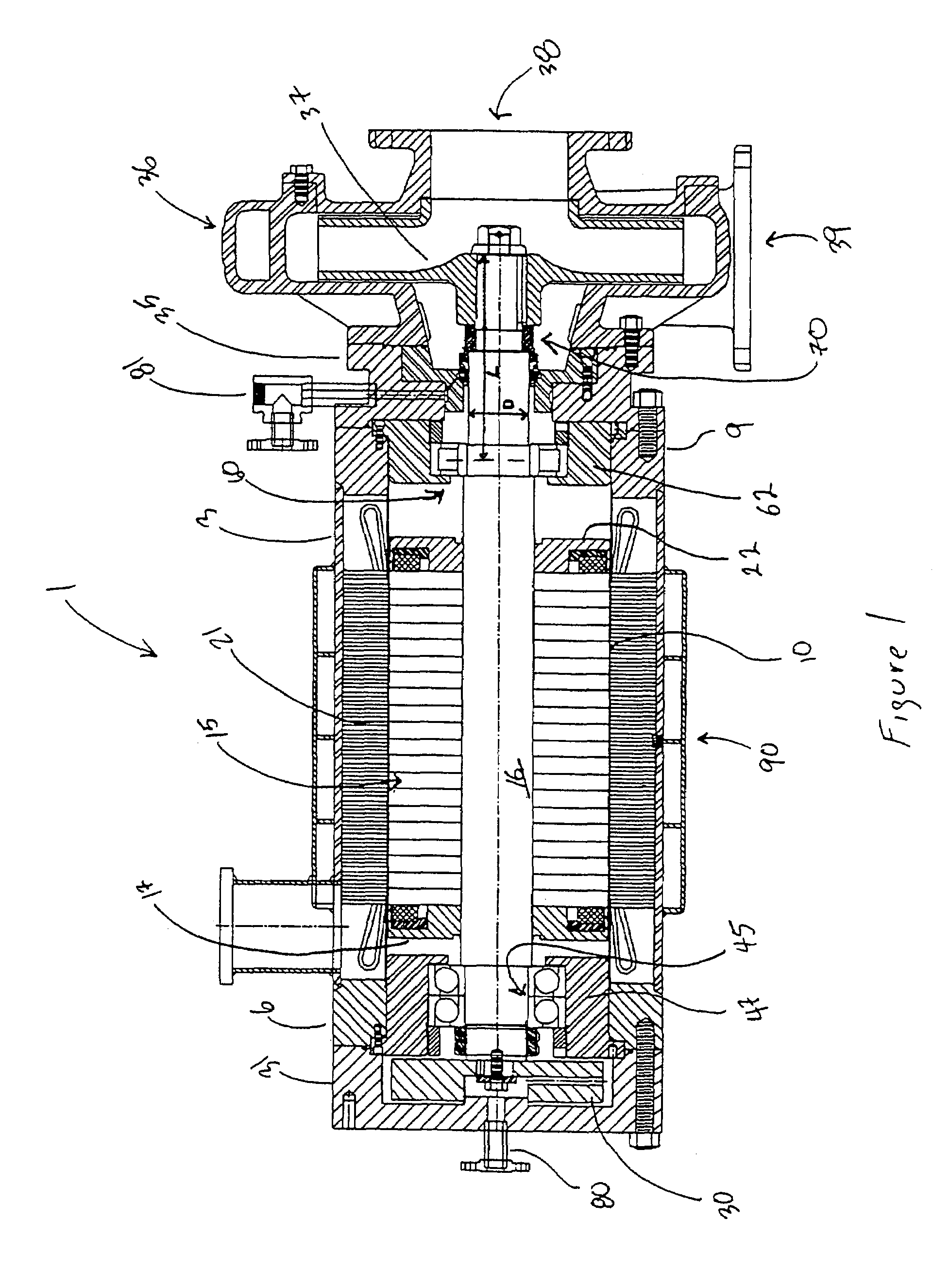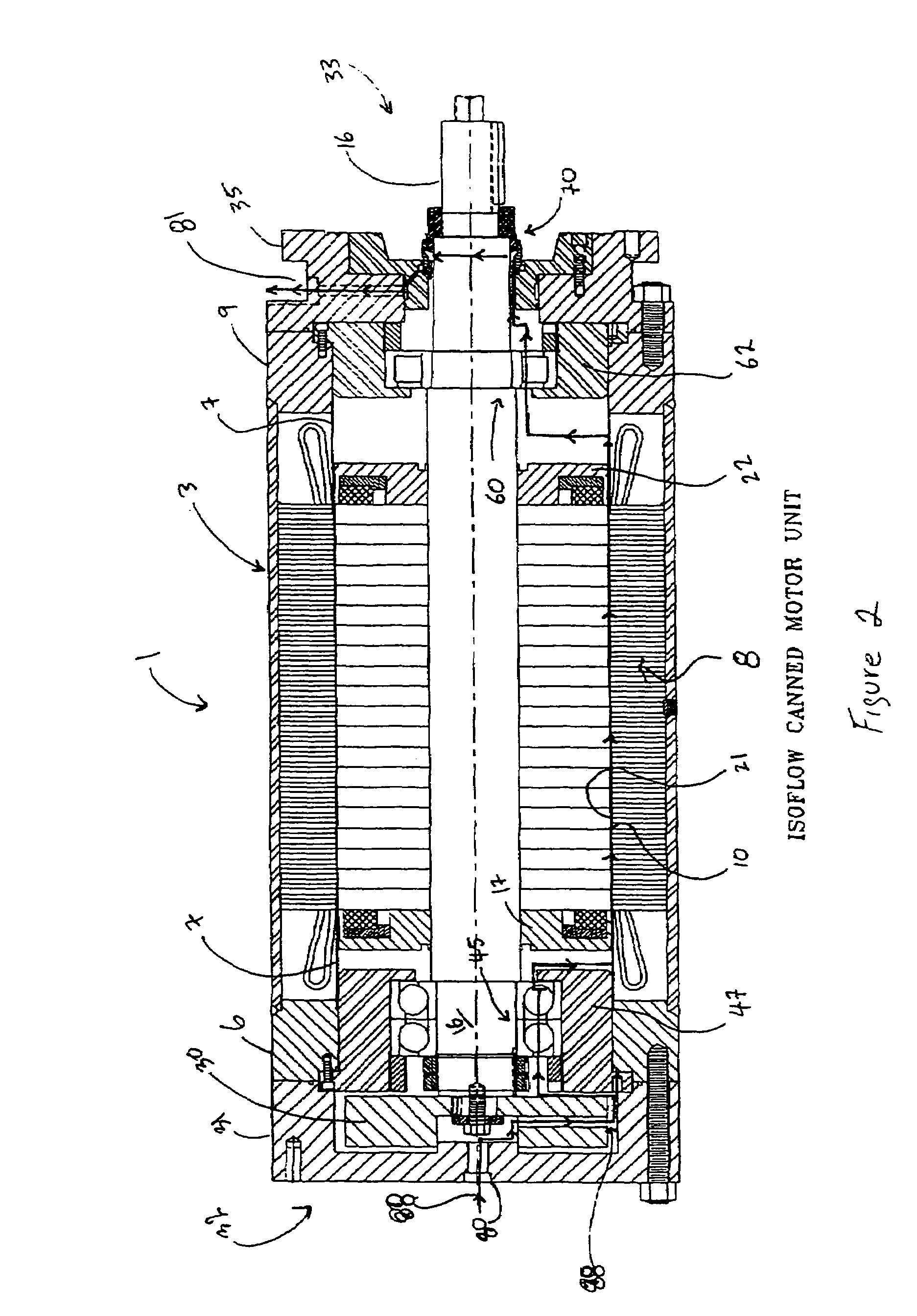Low speed canned motor
a canned motor and low-speed technology, applied in the direction of dynamo-electric machines, electrical equipment, supports/enclosements/casings, etc., can solve the problems of more shaft deflection, high cost, and high cost of operation
- Summary
- Abstract
- Description
- Claims
- Application Information
AI Technical Summary
Benefits of technology
Problems solved by technology
Method used
Image
Examples
Embodiment Construction
[0024]The invention is susceptible of many embodiments. What follows are merely preferred embodiments, and should not be construed as limiting of the scope of the invention.
[0025]FIG. 1 is an assembled cross-sectional view of the canned motor 1 of the present invention as it is employed with a standard pump. Thus, in addition to canned motor 1, FIG. 1 illustrates a pump housing 36 with an inlet 38, outlet 39, and pump impeller 37. FIG. 2 illustrates canned motor 1 with pump housing 36 and impeller 37 removed while FIG. 3 shows an exploded view of canned motor 1. Canned motor 1 includes a housing 3 with the motor having an inboard end 33 and an outboard end 32. Beginning at inboard end 33, the main components of motor 1 include mechanical seal 70 through which the end of rotor shaft 16 extends. Mechanical seal 70 engages adapter plate 35 whose outer face is designed to mate with the particular pump housing to be connected to canned motor 1. Positioned behind adapter plate 35 is inboa...
PUM
 Login to View More
Login to View More Abstract
Description
Claims
Application Information
 Login to View More
Login to View More - R&D
- Intellectual Property
- Life Sciences
- Materials
- Tech Scout
- Unparalleled Data Quality
- Higher Quality Content
- 60% Fewer Hallucinations
Browse by: Latest US Patents, China's latest patents, Technical Efficacy Thesaurus, Application Domain, Technology Topic, Popular Technical Reports.
© 2025 PatSnap. All rights reserved.Legal|Privacy policy|Modern Slavery Act Transparency Statement|Sitemap|About US| Contact US: help@patsnap.com



